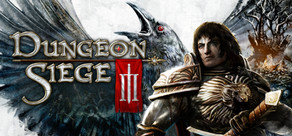 The original Dungeon Siege was released way back in 2002, with Dungeon Siege II following in 2005. With no sign of a sequel for many years and the original creators, Gas Powered Games, busy developing a number of other titles it didn’t seem like a third in the series would ever eventuate. Having been a fan of the series since the original was announced, this was almost as sad to me as the long delay between Diablo II and III.
The original Dungeon Siege was released way back in 2002, with Dungeon Siege II following in 2005. With no sign of a sequel for many years and the original creators, Gas Powered Games, busy developing a number of other titles it didn’t seem like a third in the series would ever eventuate. Having been a fan of the series since the original was announced, this was almost as sad to me as the long delay between Diablo II and III.
But at long last Dungeon Siege III (DS3) was unleashed upon the world this year. It wasn’t developed by Gas Powered Games, it wasn’t going to be as party-based as the previous two titles, the skill system wasn’t going to be freeform anymore and it wasn’t going to be a PC exclusive – perhaps the most egregious of all the changes, in some circles. Obsidian Entertainment have brought a lot of changes to the formula for their version of Dungeon Siege.
Fortunately, some things never change.
The Kingdom of Ehb is once again in turmoil. A civil war has broken out and the 10th Legion, long a stabilising force in the region, has been all but destroyed. A handful of legionnaires have managed to avoid the slaughter of their comrades and now seek to reform the 10th Legion, establish alliances and put an end to the designs of Jeyne Kessynder, architect of the original massacre of the Legion thirty years ago.
This, of course, is where the player comes in. Taking on the role of one of four descendants of the 10th Legion you’re heading towards a meeting of other legionnaires and supporters at the Montbarron Estate as the game starts. But by the time you arrive the mercenary forces of Jeyne Kessynder have already slaughtered everyone and set the mansion ablaze. Probably should’ve spent a bit less time faffing about learning how to control your character and move the camera around during the tutorial phase but there’s no helping that now.

Advancing through the mansion searching for survivors, clues and the first pieces of precious loot you’re introduced to more of the game’s systems. In the previous games you would click on an enemy and your character would attack them autonomously. If you had a melee weapon equipped, melee attacks would be used. Ranged weapons would result in a ranged attack and picking a spell would have your character use that to attack enemies or help other members of the party. As you used each kind of attack you’d gradually improve the corresponding skills and attributes.
Dungeon Siege III has (mostly) done away with this system. Each character has two stances, one suited to fighting single targets and one suited to fighting multiple opponents, regardless of whether the attack is melee, ranged or magical in nature.
Katarina, the character I chose for my initial playthrough, has a rifle for her single target attacks and dual wields a pistol and a short shotgun for her group fighting stance. The rifle’s default attack is a single, long range shot. This single shot can be chained into a combo 3 shots long, with Katarina taking one shot, shifting stance for her second shot and giving a Terminator-esque twirl to reload while stepping back for the third. In this way you can keep firing while slowly moving back away from your target.
Katarina’s group fighting stance is much more of a short range blast, hitting everything in front of her, out to a few metres.
Rounding out the basics of the combat system, all characters have the ability to perform an evasive roll to avoid damage. Not just reduce damage, or only avoid projectiles if you time it right, during the evasion your character is completely invulnerable, which trivialises some of the “traps” later in the game.
Evasive rolls are all well and good for a character that focuses on ranged attacks but the melee characters aren’t left out. Players can also block attacks, though any damage taken will drain Focus, the power pool all the characters use to fuel their special abilities and attacks, rather than subtracting from Health.
Unlike previous iterations you’re not stuck making the same basic attack for the entire game. Each character gets a total of nine activated skills, unlocked gradually as you advance in levels. Three skills are available while in your single opponent stance, three more in your group stance and the final three are defensive or buff skills, able to be activated in either stance and providing a self heal, damage buff or other effect.
Adding extra interest to the skill system is the ability to slot each with additional traits. A skill that boosts damage could be traited to also return health, or a single target attack could be altered to occasionally strike more enemies or just hit harder in general. Each skill has a choice of two traits to build on and players can choose to max out on one or the other or go for a mixture of the two.
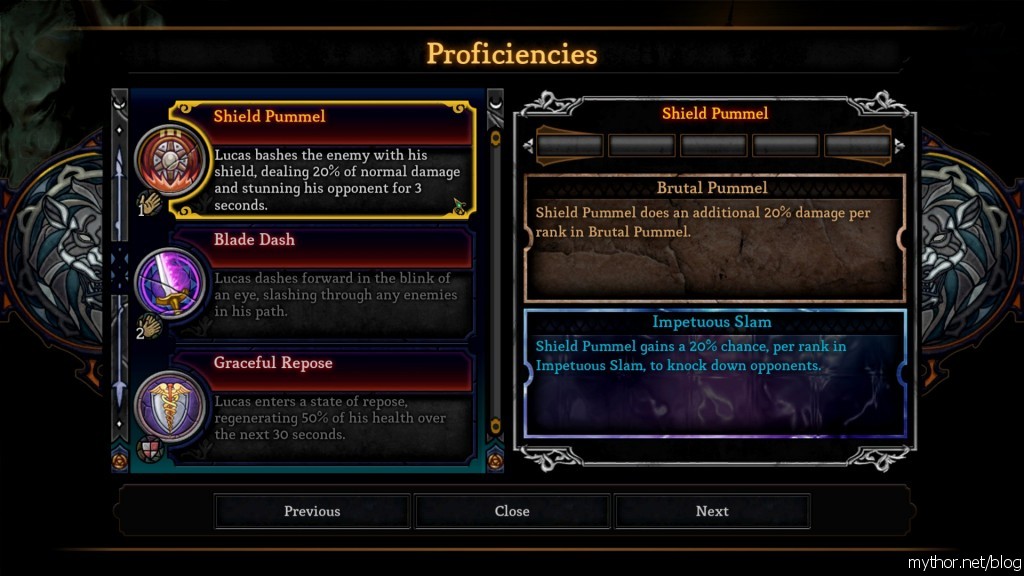
In a small nod to the past each skill also has a Mastery rating, which increases as you use the skill during the game. Once you’ve used a skill enough times you gain access to an empowered version. A healing ability might heal the entire party or an attack might become much more lethal.
A great idea that falls somewhat flat as you need to use each skill a great many times to unlock each Empowered version. From start to finish in my time with Katarina I unlocked just two empowered skills, with one only getting done via a concerted effort to use the base skill more often than was really necessary. It may have been better to tie the unlocking of ability traits to the Mastery progress bar as well, rather than having players gain a trait point per level.
Another thorn in the side of the combat system is the evasive dodge and block abilities being triggered by the same button. Hold a direction while pressing the button and you’ll dodge. Stand still, you block.
But when you do an evasive roll you come out facing in the direction of your roll, which is almost always the exact opposite of facing your enemies. So, naturally, you push the thumbstick to turn your character the right way… and often end up rolling right back into the spot you just vacated.
Similarly with block you will want to change the direction your character is facing, whether to prepare to attack an enemy or to align your block more accurately. Suddenly you’re rolling off to the side of the fight, or rolling right into the path of whatever you were preparing to block.
Playing a ranged character was a blessing since it meant relying on dodging more than blocking. A dodge in the wrong direction is easily rectified by immediately dodging again, as well as opening plenty of space between you and your enemies. Trying to play the game as the melee-centric Lucas is sometimes an exercise in frustration.
Of course it’s not a Dungeon Siege title without pack mule loads of loot. And even though there’s no pack mule to carry it around for you this time, the quantity of loot to be found is impressive, though the visual variety is sometimes a little disappointing. Katarina wields a rifle as her primary weapon and it’s always a rifle, never a crossbow or regular bow. There might be small differences in the physical model but as you spend most of the game zoomed out to see as much of the battlefield as possible, this is rarely something you will notice.
More likely to be noticed are the various armours you can equip, with much greater visual changes between the various sets of armour.
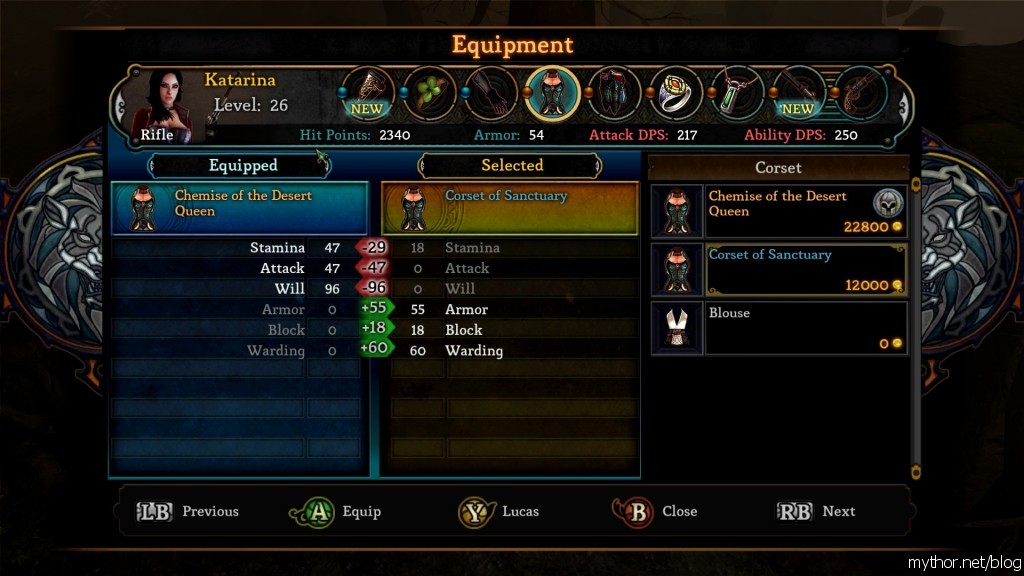
Everyone knows that juggling item statistics is where the fun begins and DS3 has a goodly selection of magical and mundane modifiers available for the items you find. There’s the expected boosts to statistics like Health and Focus, armour and block values. But the game also offers up a set of “Chaos” modifiers, which can add frost, fire, lightning or poison damage. Some even act to decrease an enemies defense or offense and the ever coveted life leech.
The amusingly named “Doom” statistic is a little less exciting than it sounds – a simple boost to the damage done when an attack is a critical hit. A welcome boost, to be sure, and another factor to consider when choosing between various items.
Also making a return from earlier versions is the Transmute ability. In previous games, Transmute was a spell you could cast on items on the ground to instantly turn them into some gold. This let you turn junk directly into gold when you would otherwise simply discard it to make way for more valuable loot.
In DS3 you need not find the spell scroll to cast Transmute, it’s just an option in the Items menu. This is great when you only want to do away with a single item but when you want to get rid of a bunch of junk at once it involves a lot more pressing of buttons and twiddling of the control stick than should be necessary, due to the game always asking if you’re sure and always defaulting to the negative.
And returns of a single gold coin per item are annoyingly common. Even late in the game, when even the rubbish items ought to sell to vendors for a hundred gold or more you’re still stuck transmuting for a pittance or hoping a vendor is coming up soon.
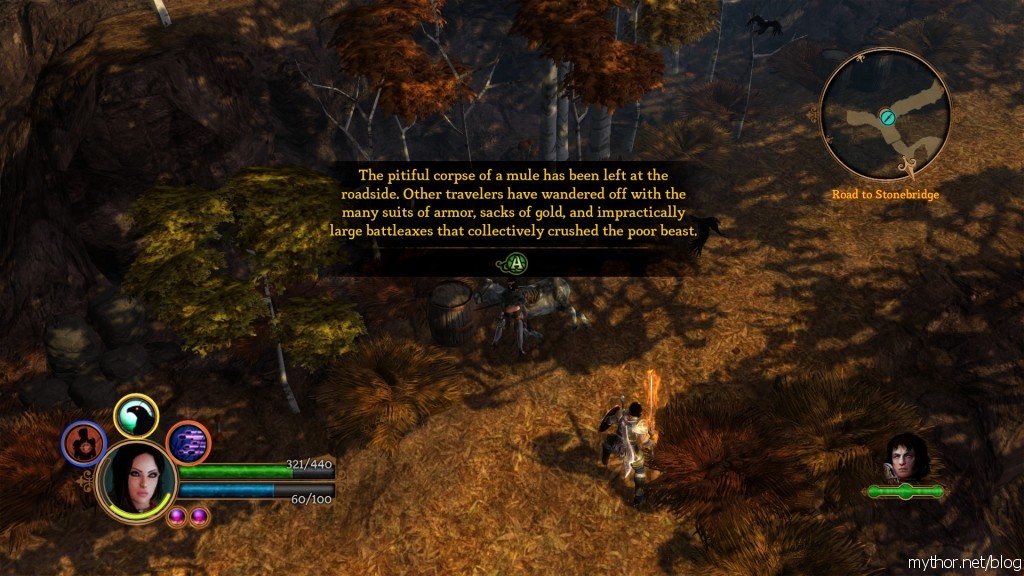
For a series better known for its action, looting and dungeon crawling the big surprise is how many conversations you take part in. Very reminiscent of the Mass Effect and Dragon Age series from Bioware you’re often presented with a variety of responses to NPCs, some of which have serious consequences. More than one conversation could end in the death of another character, including the ultimate fate of Jeyne Kessynder, leader of the opposition forces.
Not every dialog ends with such a dire outcome. In the latter stages of the game in particular there are some genuinely funny conversations that are really not crucial to the storyline but a welcome diversion from the constant pressure of saving the Kingdom.
The latter stages of the game are also where the story starts to get really interesting, which is an odd way of going about things but makes persevering that much more rewarding. Not everything is as black and white as you have been led to believe in the early stages and it makes the choices in the latter parts of the game a lot tougher.
While it’s not the best, most enthralling story ever told and the voice acting occasionally leaves a bit to be desired it’s certainly an unexpected – but welcome – addition to the series.
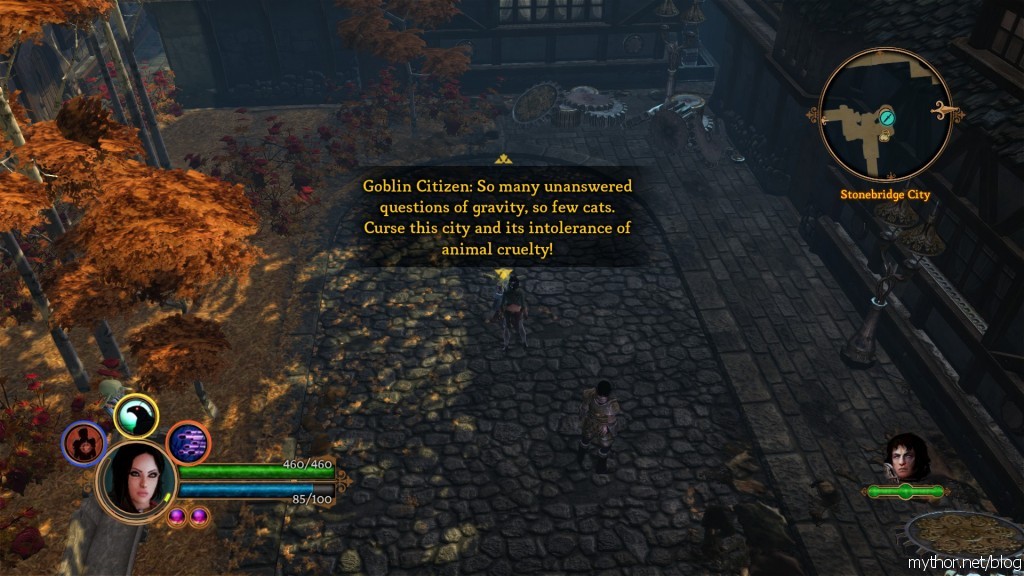
Overall Dungeon Siege III is a marked departure from what made the series great. The only real connection to the previous games is the setting and the title. Other games have gone this route and ended in disaster, so the trepidation surrounding DS3 was understandable.
But if you can get past the slightly clumsy controls there’s a lot of fun to be found here, if you’re into crawling through dungeons and looting up a storm.
And yeah, the game does support multiplayer. Technically. Apparently only the person hosting the game gets to save any of their character’s progress, loot, gold and so on. Whoever thought that was acceptable in a world where Diablo II exists clearly has no business in game design. Everyone should simply consider this a singleplayer-only affair as the game comes off a lot better if you pretend the multiplayer was never tacked on to begin with.